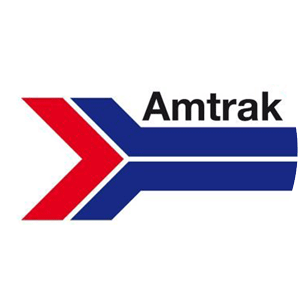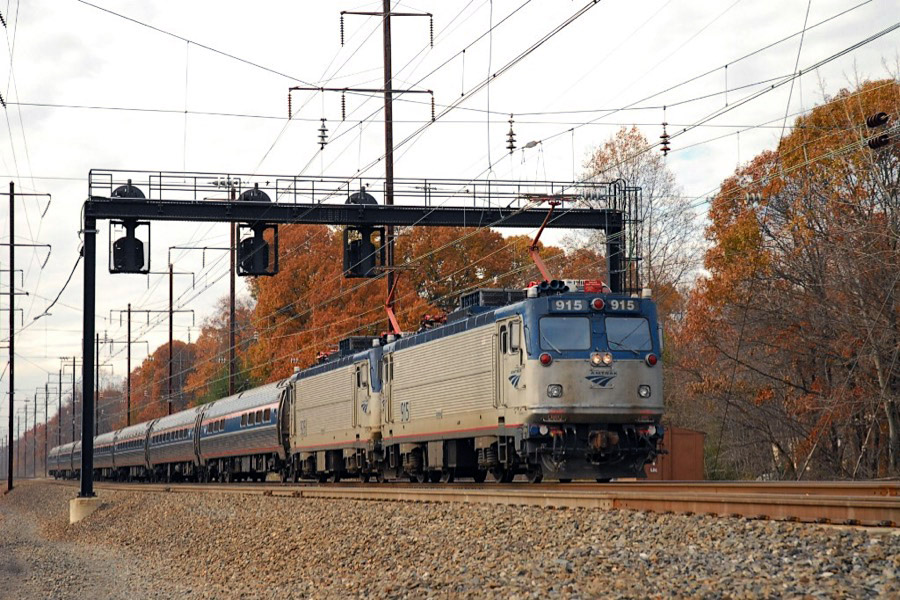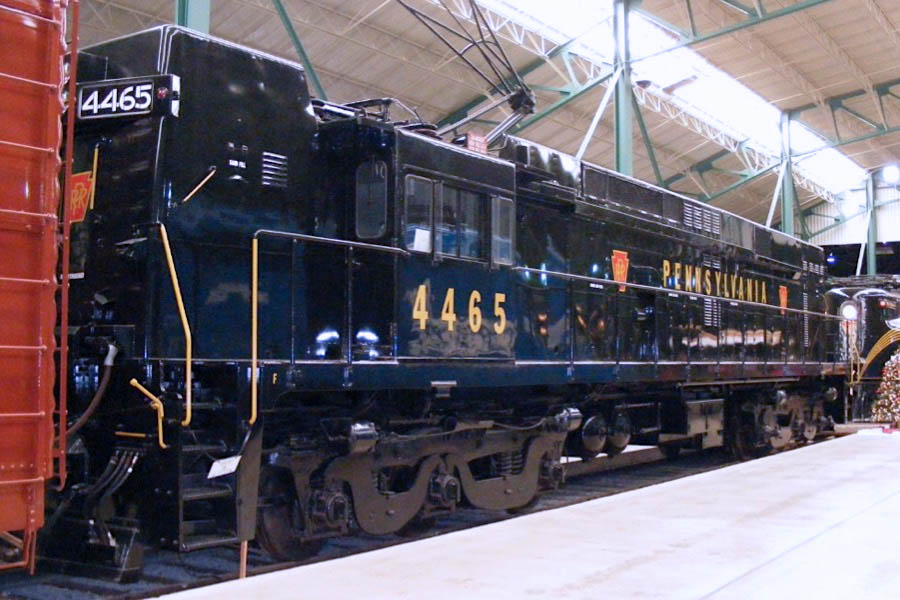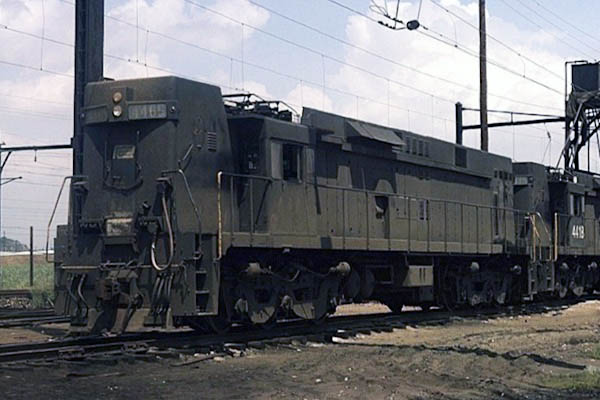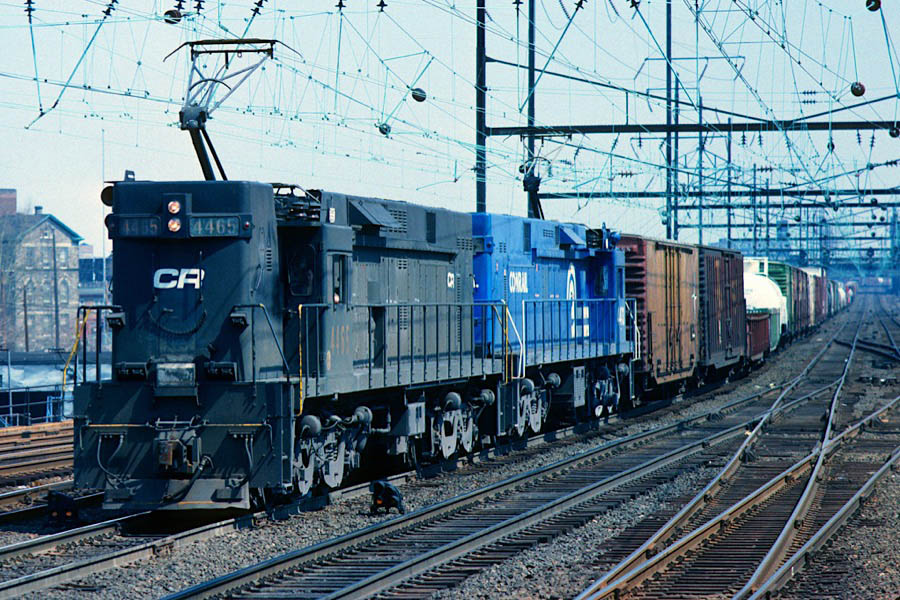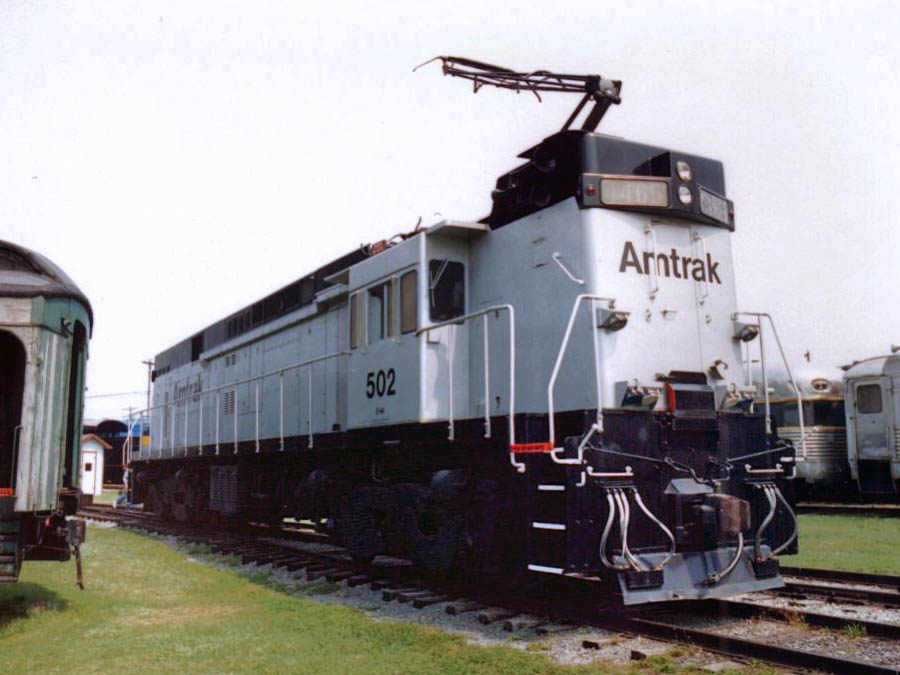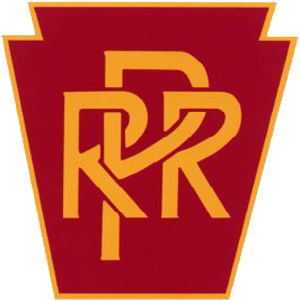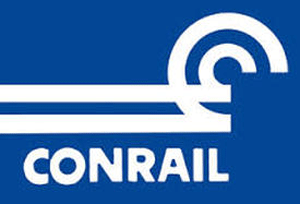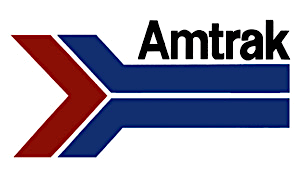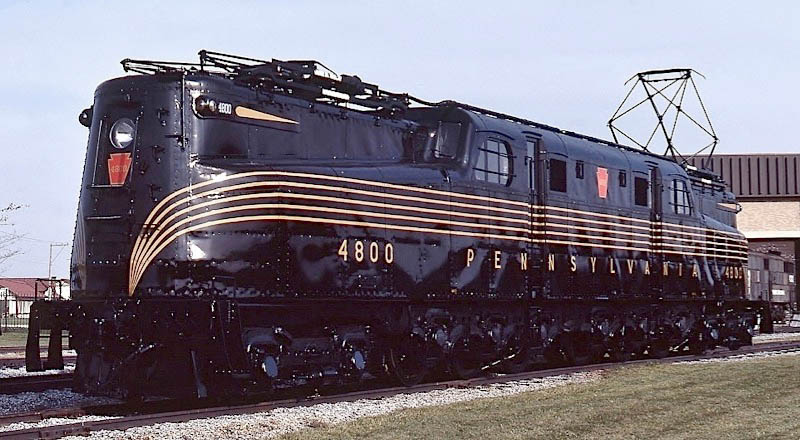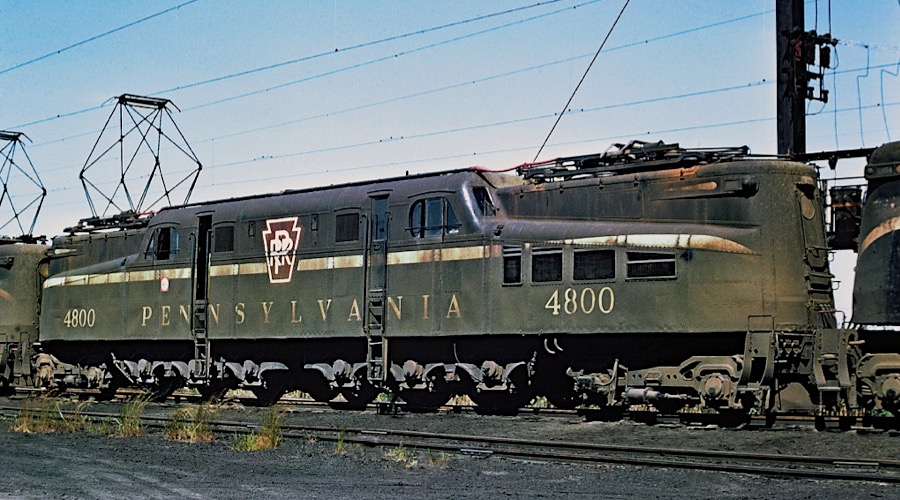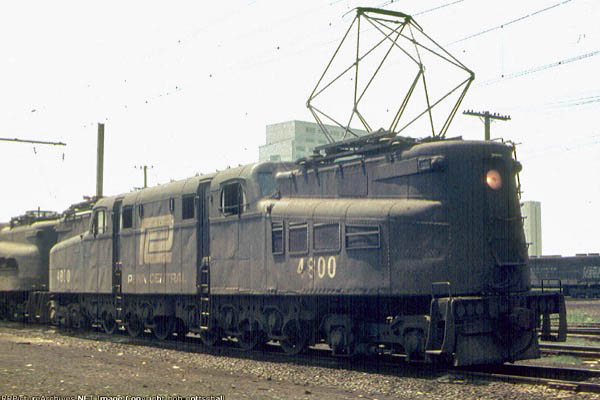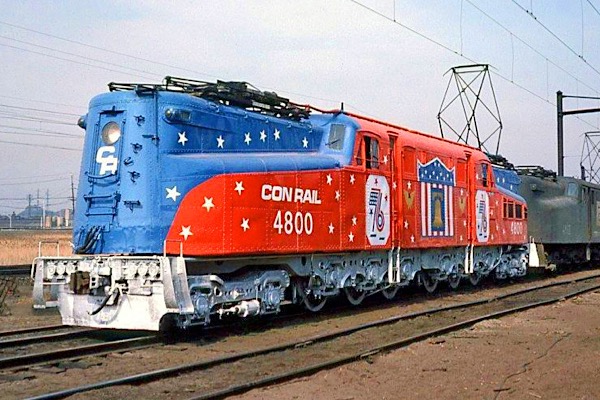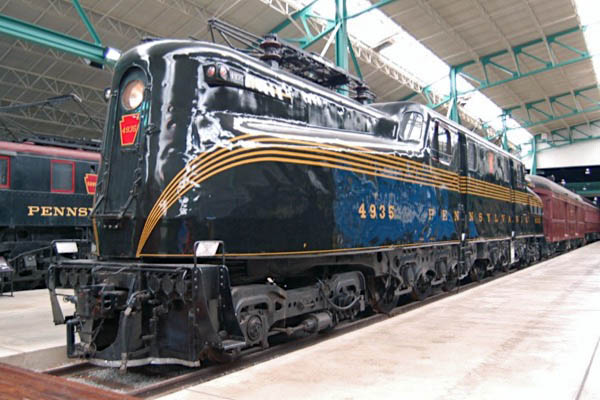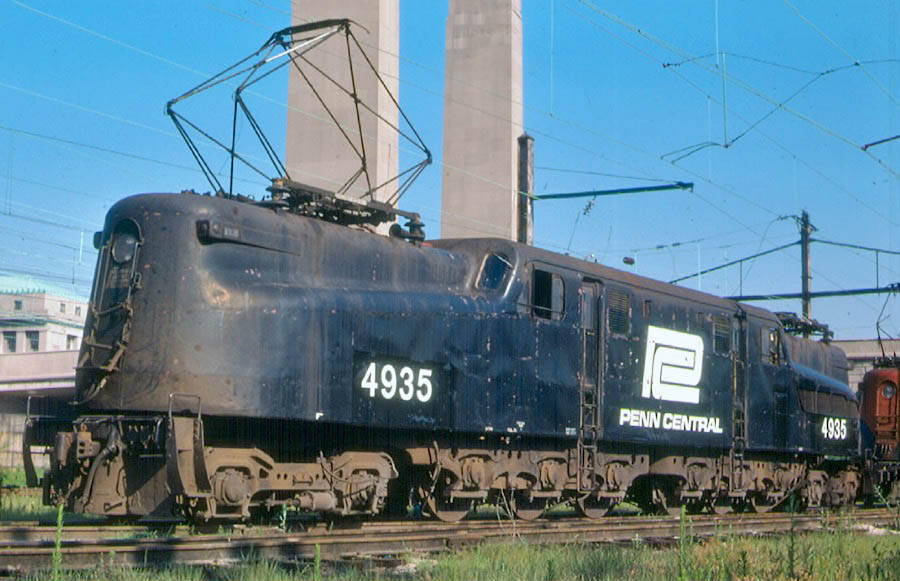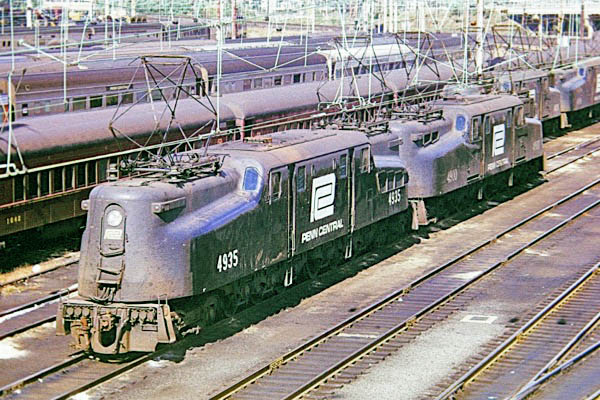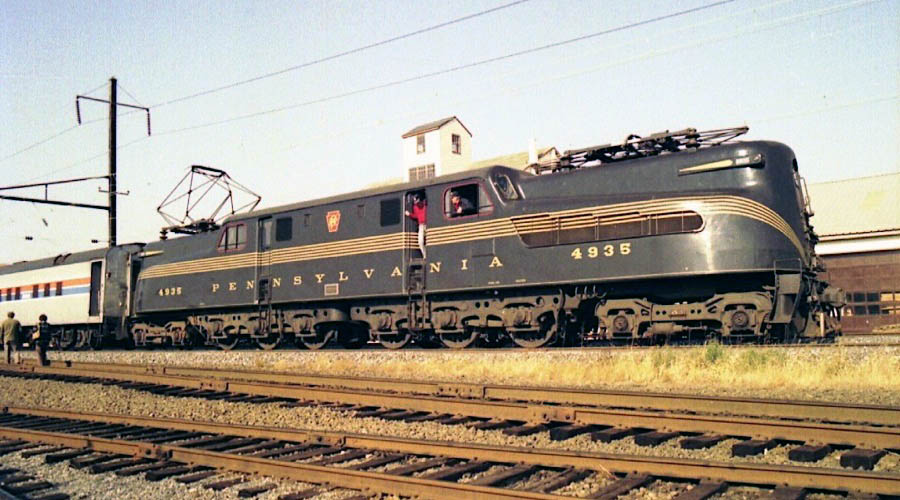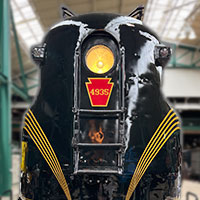 |
Railroad Museum of Pennsylvania Electric Locomotives |

Strasburg, Pa / May 2024 / RWH
#603
Amtrak #603

Amtrak #603
Strasburg, Pa / May 2024 / RWH


Amtrak #603
to Railroad Museum of Pennsylvania
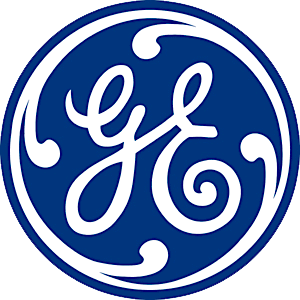
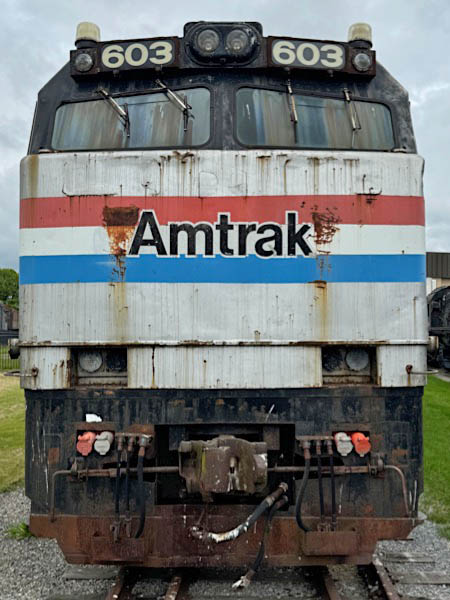
May 2024 / RWH

Strasburg, Pa / May 2024 / RWH
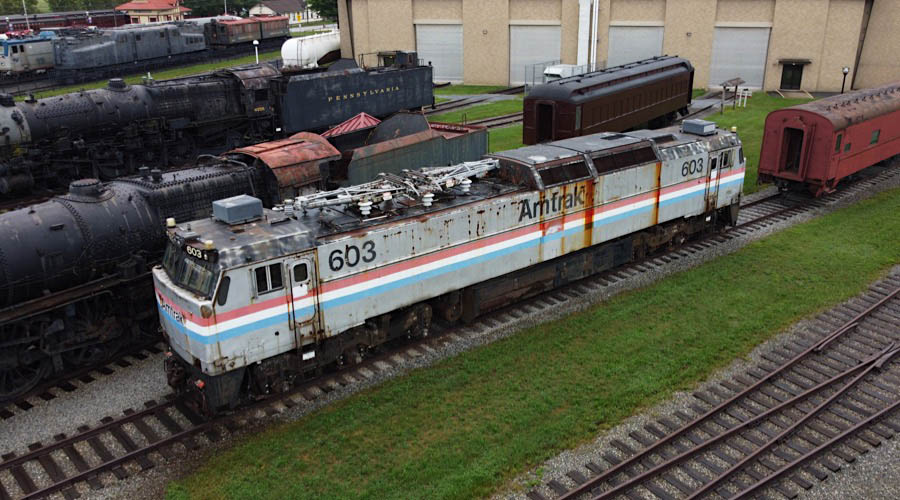
Strasburg, Pa / Jul 2020 / RWH
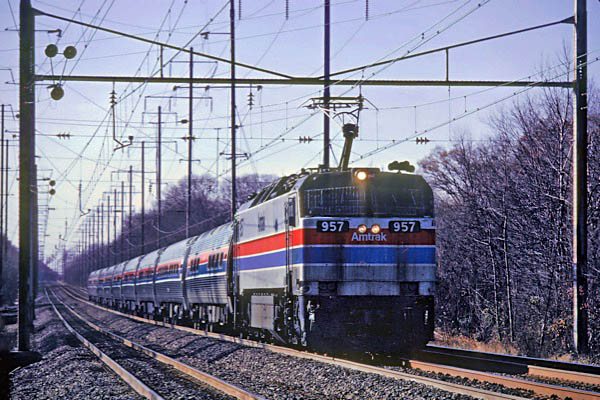 The GE E60 is a family of six-axle 6,000 hp (4.5 MW) C-C electric locomotives made by GE Transportation Systems (GE) between 1972 and 1983. The E60s were produced in several variants for both freight and passenger use in the United States and Mexico. GE designed the locomotive for use on the Black Mesa and Lake Powell Railroad (BM&LP), a dedicated coal-hauling route in Arizona, which began operation in 1973. That same year GE adapted the design for high-speed passenger service on Amtrak's Northeast Corridor. The largest customer was Ferrocarriles Nacionales de México (NdeM), the state-owned railroad in Mexico, which bought 39 for a new electrification project in the early 1980s.
The GE E60 is a family of six-axle 6,000 hp (4.5 MW) C-C electric locomotives made by GE Transportation Systems (GE) between 1972 and 1983. The E60s were produced in several variants for both freight and passenger use in the United States and Mexico. GE designed the locomotive for use on the Black Mesa and Lake Powell Railroad (BM&LP), a dedicated coal-hauling route in Arizona, which began operation in 1973. That same year GE adapted the design for high-speed passenger service on Amtrak's Northeast Corridor. The largest customer was Ferrocarriles Nacionales de México (NdeM), the state-owned railroad in Mexico, which bought 39 for a new electrification project in the early 1980s.
The E60s were successful in the coal-hauling role. They ran on the BM&LP for decades and remain in use on several mining railroads in the Western United States. The passenger variants failed in their intended role. Problems with the truck design caused derailments above 90 miles per hour, rendering the locomotives unusable for high-speed service. By the end of the 1970s Amtrak abandoned the E60 in favor of EMD AEM-7 locomotives manufactured by Electro-Motive Division.

Strasburg, Pa / Jul 2024 / Gragg Robinson

Jul 2024 / Gragg Robinson
#915
Amtrak #915


Amtrak #915
1 of 54 in Amtrak order 776073
to Railroad Museum of Pennsylvania

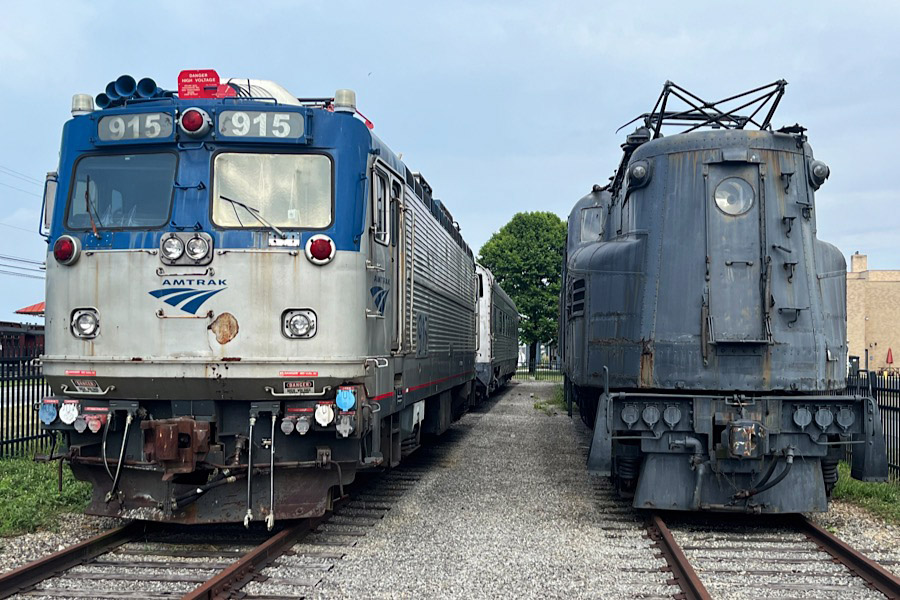
Strasburg, Pa / Jul 2024 / Gragg Robinson

Jul 2024 / Gragg Robinson
 The EMD AEM-7 is a twin-cab four-axle 7,000 hp (5.2 MW) B-B electric locomotive built by Electro-Motive Division (EMD) and ASEA between 1978 and 1988. The locomotive is a derivative of the Swedish SJ Rc4 designed for passenger service in the United States. The primary customer was Amtrak, which bought 54 for use on the Northeast Corridor and Keystone Corridor. Two commuter operators, MARC and SEPTA, also purchased locomotives, for a total of 65.
The EMD AEM-7 is a twin-cab four-axle 7,000 hp (5.2 MW) B-B electric locomotive built by Electro-Motive Division (EMD) and ASEA between 1978 and 1988. The locomotive is a derivative of the Swedish SJ Rc4 designed for passenger service in the United States. The primary customer was Amtrak, which bought 54 for use on the Northeast Corridor and Keystone Corridor. Two commuter operators, MARC and SEPTA, also purchased locomotives, for a total of 65.
Amtrak ordered the AEM-7 after the failure of the GE E60 locomotive. The first locomotives entered service in 1980 and were an immediate success, ending a decade of uncertainty on the Northeast Corridor. In the late 1990s, Amtrak rebuilt 29 of its locomotives from DC to AC traction. The locomotives continued operating through the arrival of the final Siemens ACS-64 in June 2016. MARC retired its fleet in April 2017 in favor of Siemens Chargers, and SEPTA retired all seven of its AEM-7s in November 2018 in favor of ACS-64s.
#4465

 UNCOMMON or UNUSUAL locomotive
UNCOMMON or UNUSUAL locomotive
Pennsylvania #4465
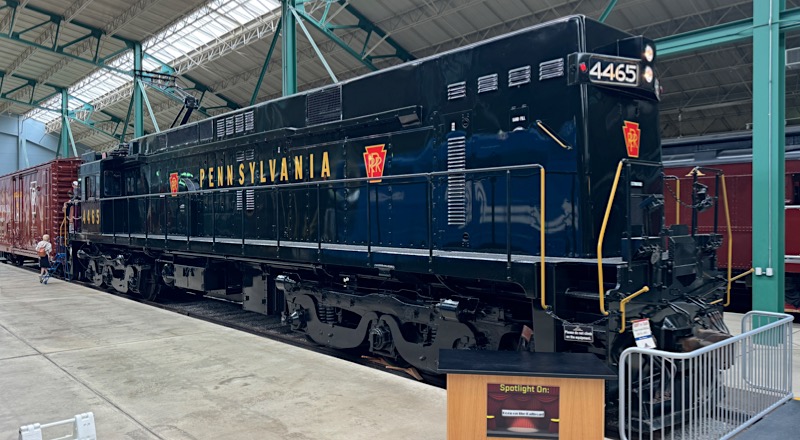
Pennsylvania #4465
Strasburg, Pa / May 2024 / RWH


Pennsylvania #4465
to Penn Central #4465
to Conrail #4465
to Amtrak #4465 > to #502
to Railroad Museum of Pennsylvania

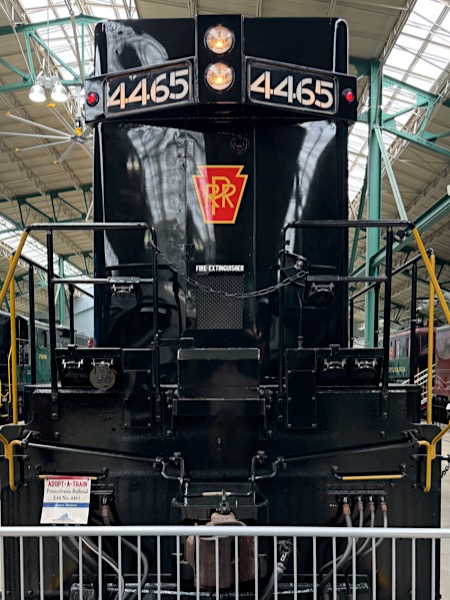
May 2024 / RWH
#4800
Pennsylvania #4800

 UNCOMMON or UNUSUAL locomotive
UNCOMMON or UNUSUAL locomotive


Pennsylvania #4800
to Penn Central #4800
to Conrail #4800
to Railroad Museum of Pennsylvania

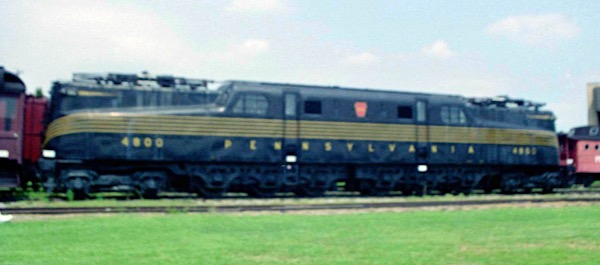
Strasburg, Pa / Aug 1994 / RWH
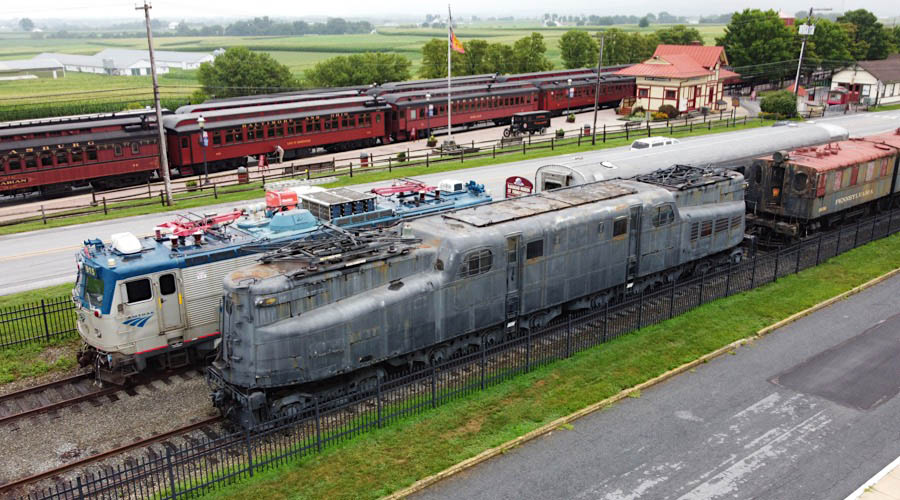
Strasburg, Pa / Jul 2020 / RWH

Strasburg, Pa / Jul 2024 / Gragg Robinson
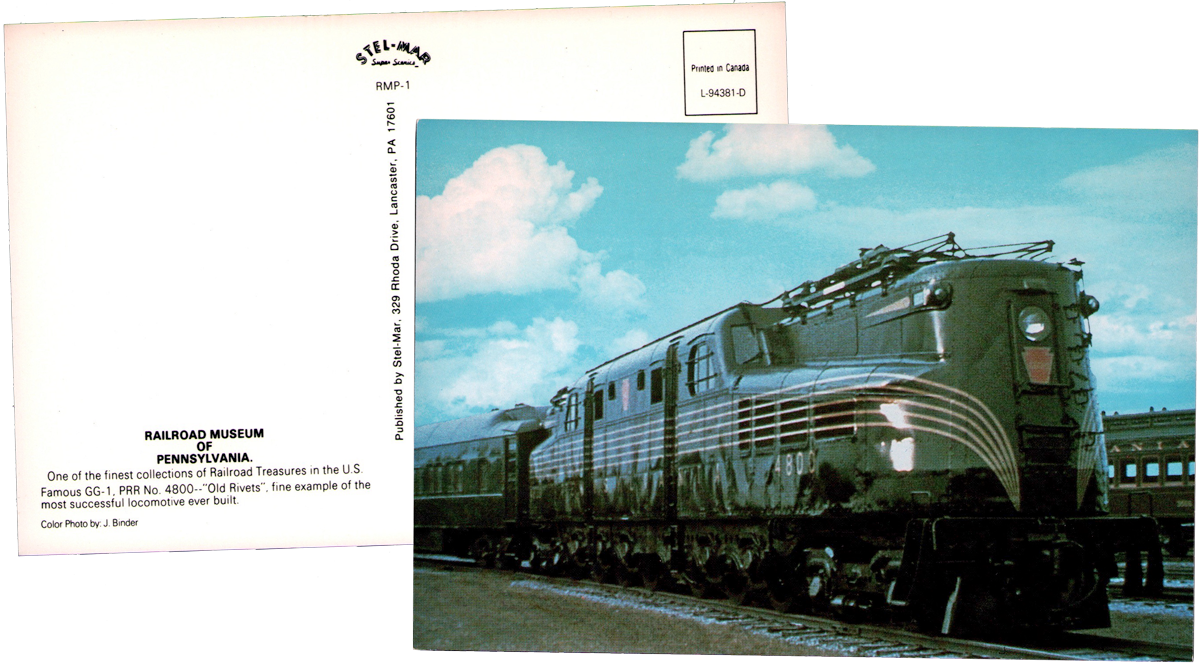
postcard / collection
 The Pennsylvania Railroad GG1 is a class of streamlined electric locomotives built for the Pennsylvania Railroad (PRR), in the northeastern United States. The class was known for its striking art deco shell, its ability to pull trains at up to 100 mph, and its long operating career of almost 50 years.
The Pennsylvania Railroad GG1 is a class of streamlined electric locomotives built for the Pennsylvania Railroad (PRR), in the northeastern United States. The class was known for its striking art deco shell, its ability to pull trains at up to 100 mph, and its long operating career of almost 50 years.
Between 1934 and 1943, General Electric and the PRR's Altoona Works built 139 GG1s. The GG1 entered service with the PRR in 1935 and later ran on successor railroads Penn Central, Conrail, and Amtrak. The last GG1 was retired by New Jersey Transit in 1983. Most have been scrapped, but sixteen are in museums.
#4935
Pennsylvania #4935
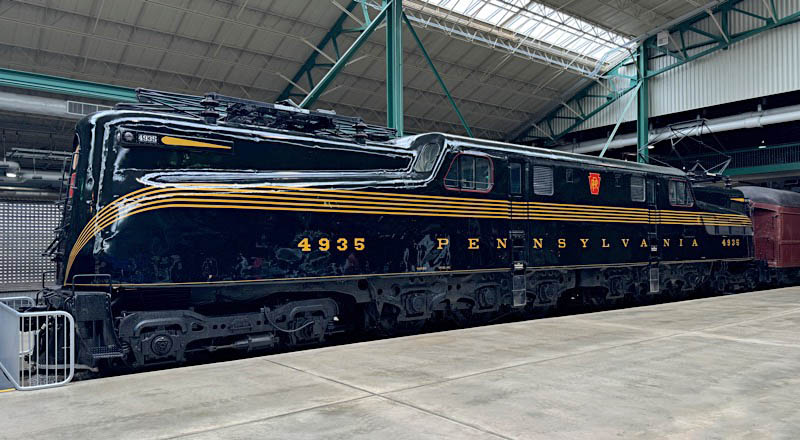
Pennsylvania Railroad #4935
Strasburg, Pa / May 2024 / RWH


Pennsylvania #4935
to Penn Central #4935
to Amtrak #4935 > rebuilt 1977
to Railroad Museum of Pennsylvania

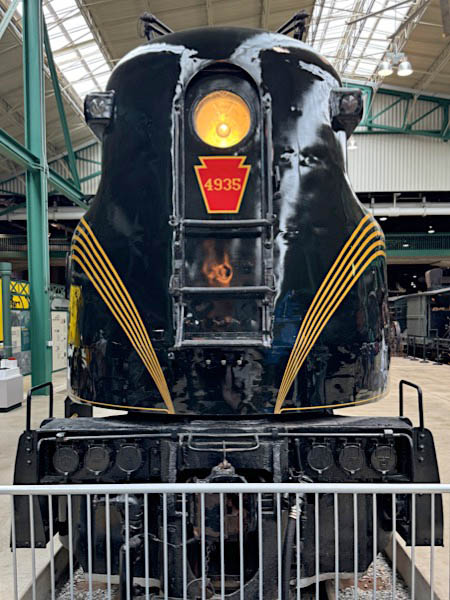
May 2024 / RWH
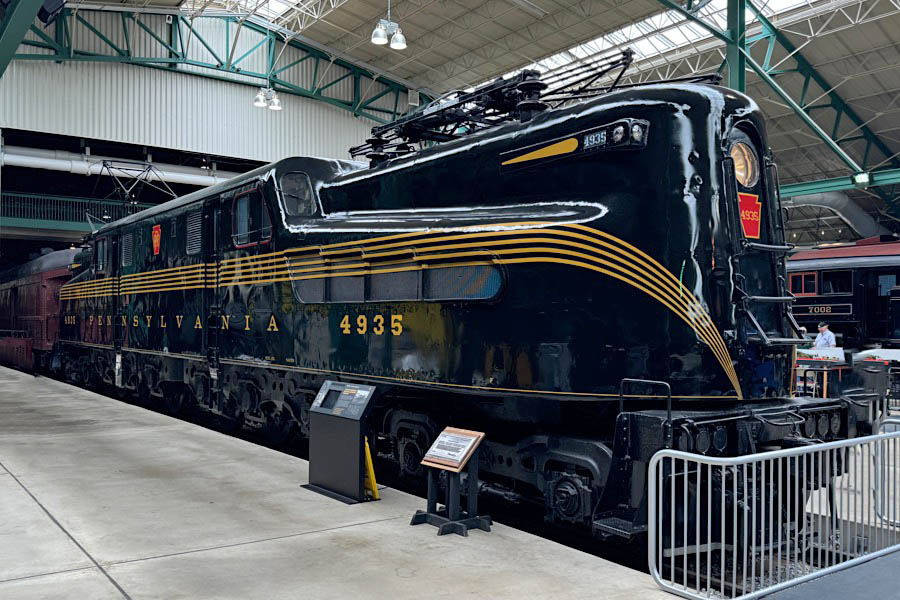
Strasburg, Pa / May 2024 / RWH
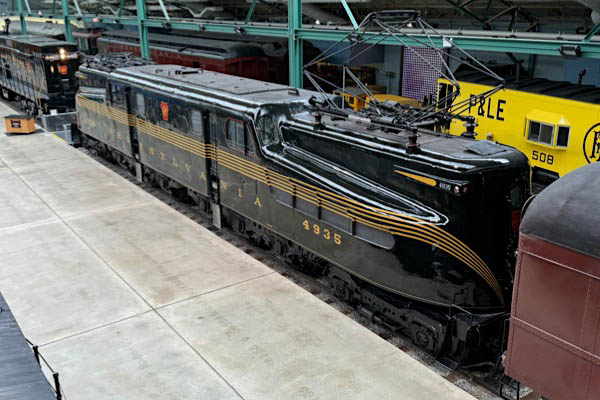
Strasburg, Pa / May 2024 / RWH
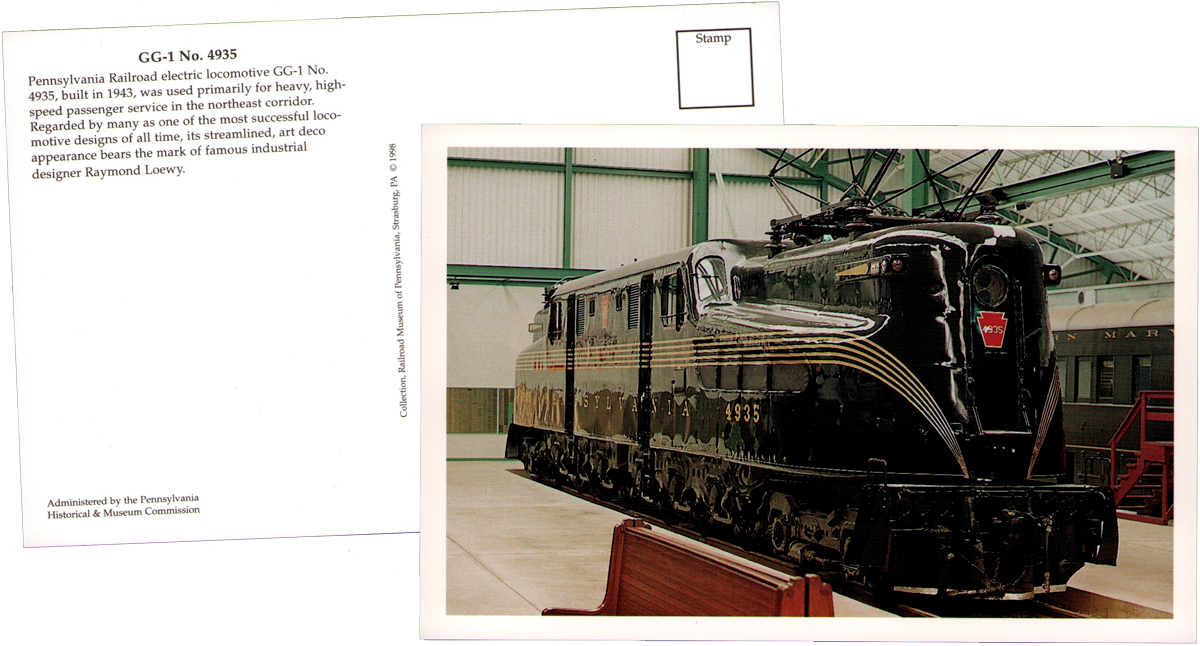
postcard / collection
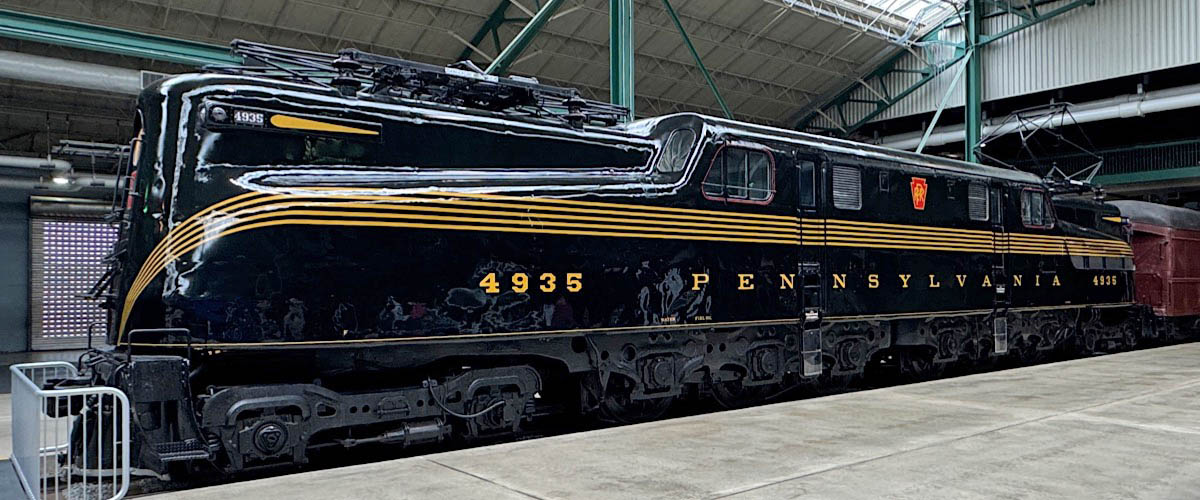
Strasburg, Pa / May 2024 / RWH
 In 1976, railfan and United States Department of Transportation economist Howard Serig approached Penn Central about the possibility of restoring a GG1 to its original condition, but Penn Central was not interested. That November, Serig proposed the idea in a column for Trains magazine. A friend of Serig brought the proposal to Amtrak president Paul Reistrup. Reistrup approved the plan on January 18, 1977
In 1976, railfan and United States Department of Transportation economist Howard Serig approached Penn Central about the possibility of restoring a GG1 to its original condition, but Penn Central was not interested. That November, Serig proposed the idea in a column for Trains magazine. A friend of Serig brought the proposal to Amtrak president Paul Reistrup. Reistrup approved the plan on January 18, 1977
A private group, the Friends of the GG1 Committee (F.O.G.G.), was formed within days to coordinate funding from National Railway Historical Society chapters. Raymond Loewy, who designed the smooth shell and paint scheme of the GG1, was later enlisted as the honorary chairman. FOGG raised $10,000 within two months; on March 9, the group signed an agreement with Amtrak.[2] 4935 was chosen because it retained its original number and air intakes and was already in good shape.
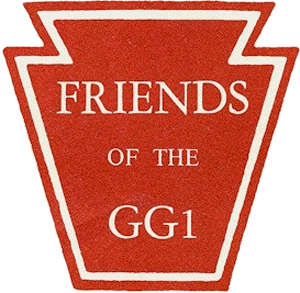 On March 25, 1977, 4935 was taken to the Wilmington Shops in Wilmington, Delaware. Amtrak replaced truck bearings, a blower, the boiler (used for steam heating of passenger cars), and made other mechanical repairs. The locomotive was grit-blasted, primed, and repainted into original PRR livery of dark Brunswick green with five golden stripes.
On March 25, 1977, 4935 was taken to the Wilmington Shops in Wilmington, Delaware. Amtrak replaced truck bearings, a blower, the boiler (used for steam heating of passenger cars), and made other mechanical repairs. The locomotive was grit-blasted, primed, and repainted into original PRR livery of dark Brunswick green with five golden stripes.
The entire refurbishment was complete on May 9, 1977. The 4935 was tested near Perryville on May 12. On May 15, 1977, the 4935 was returned to service with a rededication ceremony, after which it pulled the northbound Murray Hill in revenue service.
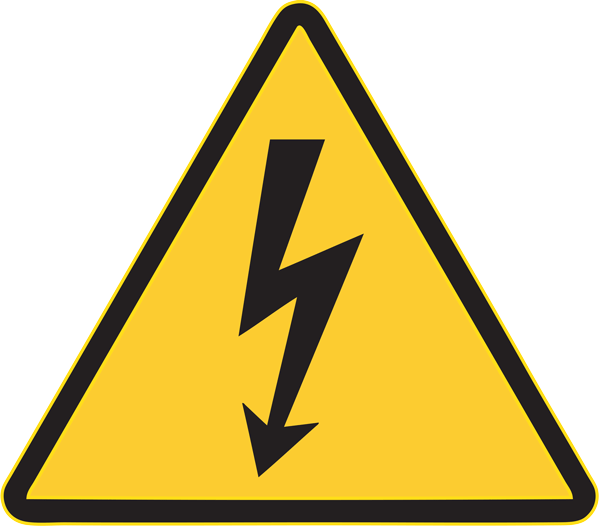
 Railroad Museum Electric locomotive roster
Railroad Museum Electric locomotive roster


